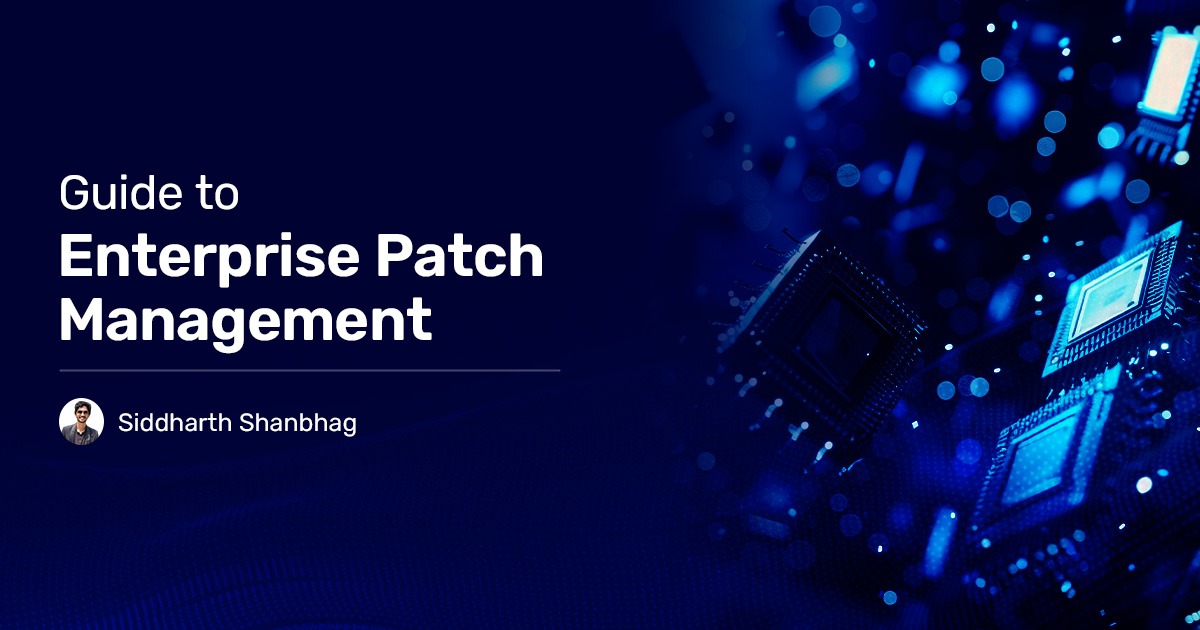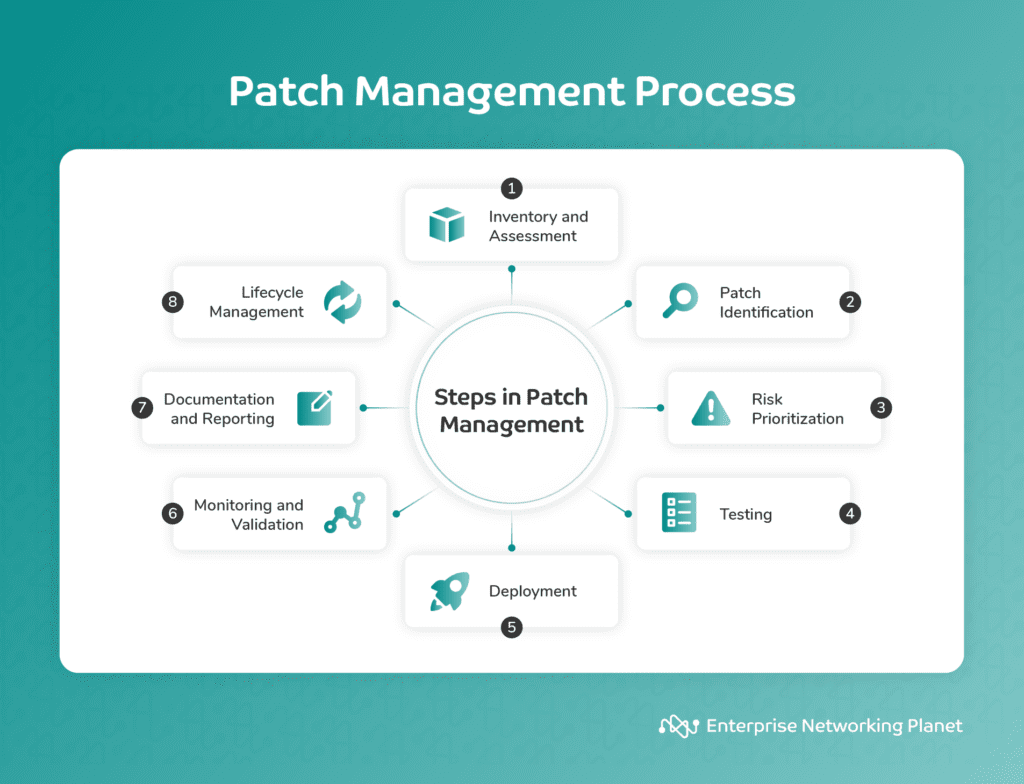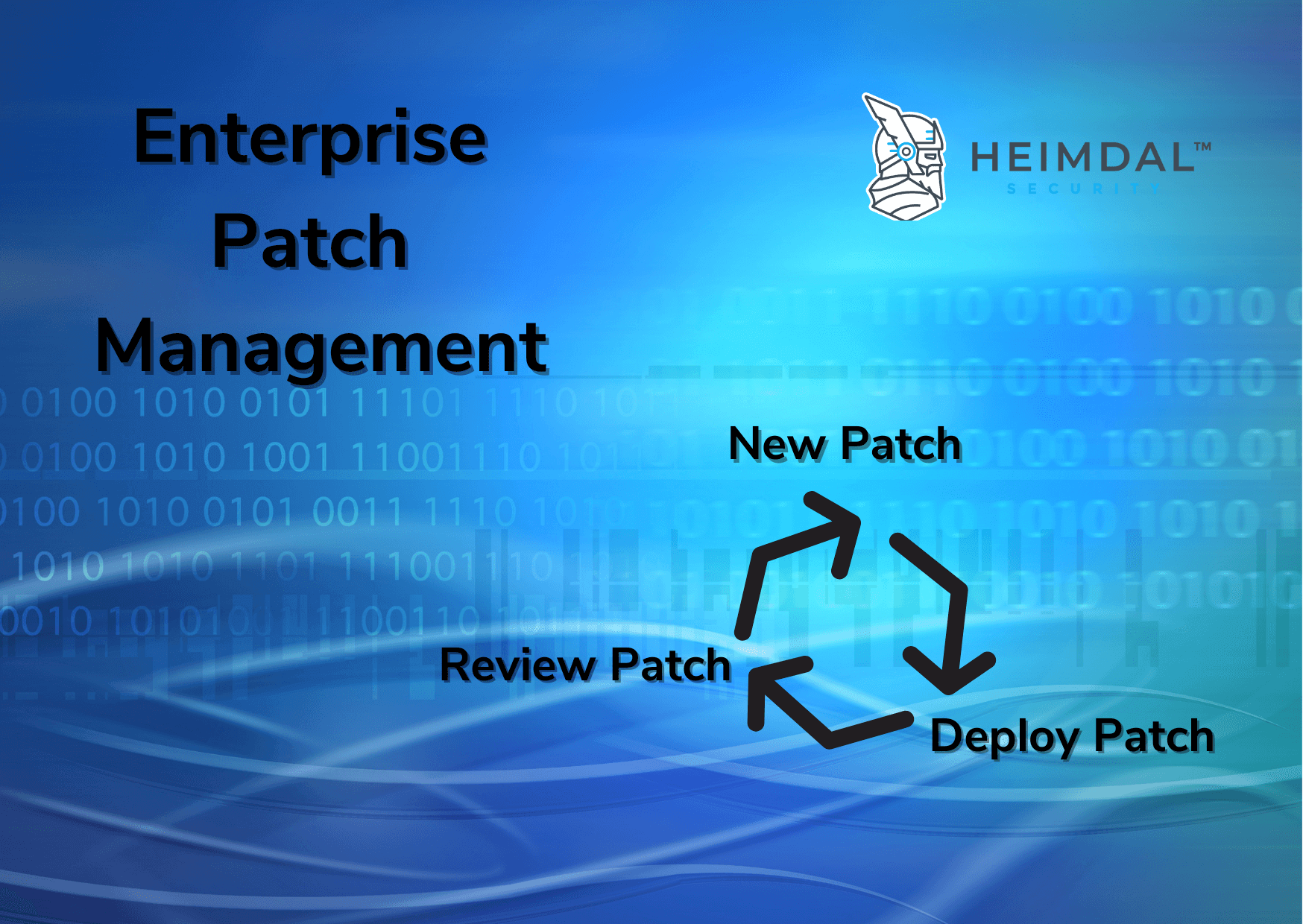Enterprise Patch Management Software: Your Shield Against Cyber Threats
In today’s interconnected world, cybersecurity is paramount. For businesses of any size, from small startups to multinational corporations, protecting sensitive data and maintaining operational stability is crucial. One of the most effective ways to achieve this is through robust enterprise patch management. But what exactly is patch management, and why is specialized software so important?
Let’s break it down. Think of your computer’s software as a house. Over time, cracks and vulnerabilities appear – these are bugs and security flaws. Hackers are like burglars, constantly looking for weaknesses to exploit. Patches are like repairs; they fix those vulnerabilities, patching up the cracks and strengthening your defenses. Enterprise patch management software automates the process of finding, downloading, and installing these vital updates across your entire network. This prevents hackers from gaining access and causing significant damage.
Keywords: Enterprise Patch Management, Patch Management Software, Vulnerability Management, Cybersecurity, Software Updates, Security Patches, IT Security, Network Security, Automated Patching, Patch Deployment
Why You Need Enterprise Patch Management Software
Manually managing patches across a large network is incredibly time-consuming and prone to errors. Imagine trying to update every single computer, server, and device individually – it’s a logistical nightmare! That’s where enterprise patch management software steps in. It automates the entire process, saving you valuable time and resources.
Here’s how it helps:
-
Automated Patching: The software automatically scans your network for outdated software and identifies necessary patches. It then downloads and installs these updates, often during off-peak hours to minimize disruption.
-
Centralized Management: You can manage all your patches from a single console, providing a comprehensive overview of your security posture. This makes it easy to track progress, identify vulnerabilities, and ensure consistent patching across your entire network.
-
Reduced Risk: By keeping your software updated, you significantly reduce your vulnerability to cyberattacks. This protects your sensitive data, prevents system downtime, and avoids costly legal and reputational damage.

-
Improved Compliance: Many industries have strict regulations regarding data security. Enterprise patch management software helps you meet these compliance requirements, avoiding potential penalties and fines.

Enhanced Efficiency: Automating the patching process frees up your IT team to focus on other critical tasks, improving overall efficiency and productivity.

Keywords: Automated Patching, Centralized Management, Risk Reduction, Compliance, IT Efficiency, Security Posture, Vulnerability Scanning, Patch Deployment Automation
Key Features of Enterprise Patch Management Software
Different software packages offer various features, but some common elements include:
-
Vulnerability Scanning: Regular scans identify potential weaknesses in your systems, allowing for proactive patching.
-
Patch Prioritization: The software can prioritize patches based on severity and risk, ensuring that critical updates are installed first.
-
Reporting and Analytics: Detailed reports provide insights into your patching status, helping you track progress and identify areas for improvement.
-
Approval Workflows: Some systems allow for approval workflows, ensuring that changes are reviewed and authorized before deployment.
-
Rollback Capabilities: In case a patch causes unexpected problems, rollback capabilities allow you to quickly revert to the previous software version.
-
Integration with Other Systems: Many enterprise patch management solutions integrate with other security tools, providing a holistic security approach.
Keywords: Vulnerability Scanning, Patch Prioritization, Reporting, Analytics, Workflow Approval, Rollback, System Integration, Patch Management Tools
Choosing the Right Software for Your Needs
Selecting the right enterprise patch management software depends on your specific needs and budget. Consider these factors:
-
Size of Your Network: The number of devices you need to manage will influence the software’s scalability.
-
Type of Devices: Ensure the software supports all the devices on your network, including computers, servers, mobile devices, and network equipment.
-
Budget: Prices vary widely, so choose a solution that fits your budget.
-
Ease of Use: Select software that is intuitive and easy for your IT team to use.
-
Support: Look for a vendor that offers reliable technical support.
Keywords: Software Selection, Network Size, Device Support, Budget Considerations, User Friendliness, Technical Support, Patch Management Solutions
Here’s a table comparing three popular enterprise patch management software options (fictional examples for illustrative purposes):
| Feature | PatchGuard Pro | SecurePatch Max | CyberShield Elite |
|---|---|---|---|
| Price | $$$ | $$ | $ |
| Number of Devices | Unlimited | 500 | 100 |
| OS Support | Windows, macOS, Linux | Windows, macOS | Windows |
| Reporting | Detailed, Customizable | Basic | Limited |
| Automation | High | Medium | Low |
Keywords: PatchGuard Pro, SecurePatch Max, CyberShield Elite, Software Comparison, Pricing, Features, Device Compatibility
Implementing and Managing Your Patch Management System
Once you’ve chosen your software, implementing it involves several steps:
-
Assessment: Assess your current network infrastructure and identify all devices needing patches.
-
Installation: Install the software on a central server and configure it according to your needs.
-
Testing: Test the software in a controlled environment before deploying it across your entire network.
-
Deployment: Gradually deploy the software to your devices, monitoring for any issues.
-
Monitoring: Continuously monitor the system’s performance and make adjustments as needed.
Keywords: Implementation, Network Assessment, Software Installation, Testing, Deployment, Monitoring, Patch Management Process
Here is a table outlining the typical process of patching a vulnerability:
| Step | Description | Timeframe |
|---|---|---|
| Vulnerability Detection | Software scans for vulnerabilities. | Continuous |
| Patch Availability | Software checks for a patch from the vendor. | Varies |
| Patch Approval | Security team approves the patch for deployment. | Minutes to Hours |
| Patch Deployment | The patch is automatically deployed to the affected systems. | Minutes to Hours |
| Verification | The software verifies successful patch installation and system stability. | Minutes |
| Reporting | A report is generated documenting the entire patching process. | Immediate |
Keywords: Vulnerability Detection, Patch Approval, Patch Deployment, Verification, Reporting, Patching Process, Patch Management Lifecycle
The Importance of Regular Patching
Regular patching is crucial for maintaining your network’s security. Failing to do so leaves your systems vulnerable to attacks, resulting in data breaches, financial losses, and reputational damage. Think of it like regular car maintenance; small, preventative measures prevent larger, more costly problems down the road.
Keywords: Regular Patching, Security Maintenance, Data Breach Prevention, Financial Loss Prevention, Reputation Management
Conclusion
Enterprise patch management software is an essential tool for any organization that wants to protect its data and systems from cyber threats. By automating the patching process, it simplifies management, reduces risk, and improves overall security. Investing in a robust patch management system is a smart investment that protects your business’s future.
Keywords: Patch Management Benefits, Cybersecurity Investment, Data Protection, Risk Mitigation, Business Security
FAQ
-
Q: What happens if I don’t use patch management software?
*A: You risk significant vulnerabilities to cyberattacks, leading to data breaches, system downtime, and financial losses. -
Q: Is patch management software difficult to use?
*A: Most modern solutions are designed to be user-friendly, with intuitive interfaces and automated processes. -
Q: How much does patch management software cost?
*A: Prices vary significantly depending on the features, the number of devices, and the vendor. -
Q: Can I manage patches manually?
*A: Yes, but it is incredibly time-consuming, error-prone, and inefficient, especially for larger networks. -
Q: What types of vulnerabilities are addressed by patch management?
*A: Patches address various vulnerabilities, including security flaws, bugs, and performance issues.
Keywords: Patch Management FAQs, Cybersecurity Risks, Software Usability, Cost of Patch Management, Manual Patching, Vulnerability Types
This article provides a comprehensive overview of enterprise patch management software. Remember to always consult with IT professionals to determine the best solution for your specific needs. The world of cybersecurity is constantly evolving, so staying informed and proactive is key to protecting your valuable data and systems.
